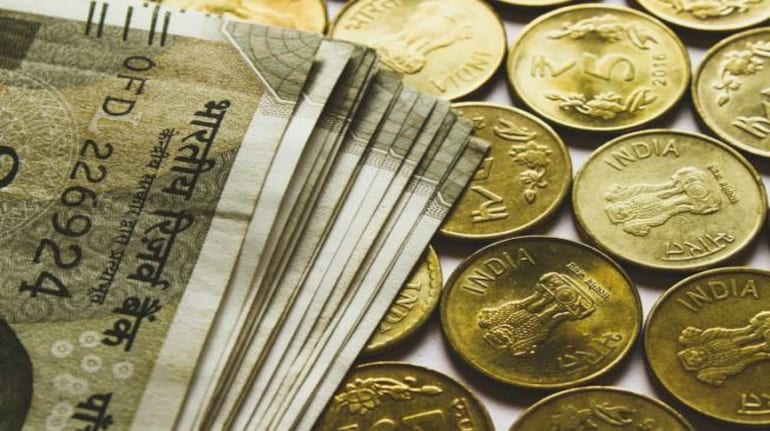



The Indian rupee has been on a free-fall, hitting record lows multiple times against the US dollar due to factors such as strong dollar overseas, foreign capital outflows from domestic equities, and high crude oil prices, dealers said.
According to data compiled by dealers, the rupee has depreciated around 9.30 percent since January 3, and nearly 7.44 percent since April 1. On October 3, the rupee depreciated 53 paisa to close at 81.87 against the US dollar, not very far from its record low of 81.95.
"FPIs in domestic equities have sold around $2.5 billion in the last seven trading sessions. Brent crude prices have also bounced back from the lows of $83/bbl on the back of talks of output cut in the upcoming OPEC meeting, which is due on Wednesday. USDCNH pair seen bouncing back is putting pressure on rupee," said Kunal Sodhani, Vice-President at Global Trading Centre, Sinhan Bank.
Further, the geopolitical crises and uncertainties created out of these events have piled pressure on most economies at a time when they are coming out of the COVID-19 shocks and trying to manage high inflation through repeated rate hikes, a dealer with a brokerage firm said. This is putting pressure on the rupee against the US dollar, the dealer added.
Besides, heavy outflows by foreign investors from domestic equities is further weakening the rupee. To control the free-fall, the Reserve Bank of India (RBI) is intervening in the currency market by selling dollars. Due to this, India's forex reserves have fallen sharply. From around $634.965 billion at the start of this calendar year, it has fallen to $537.518 bn now.
Dealers expect that it will fall further as the central bank is constantly intervening in the market.
The RBI governor, during the monetary policy review, said that they do not have any fixed exchange rate in mind. It intervenes in the market to curb excessive volatility and anchor expectations.
"The overarching focus is on maintaining macroeconomic stability and market confidence. Our actions have helped in engendering investor confidence as reflected in the return of capital inflows since July. Over the medium term, the primacy of price stability embedded in our flexible inflation targeting (FIT) framework provides the anchor for exchange rate stability," RBI Governor Shaktikanta Das said.
Meanwhile, foreign investors remained net sellers in September too after the hawkish stance by the US Federal Reserve and sharp depreciation in the rupee. As per data from depositories, foreign investors pulled out Rs 7,624 crore from Indian equities in September. With this, foreign investors have pulled out a total Rs 1.70 lakh crore from Indian equities so far in 2022.
"It must be mentioned that even as the dollar index has surged by 17.1 percent since the war broke out, the rupee has only depreciated by 7.8 percent, indicating the RBI has been leaning against the wind in terms of managing the currency," the SBI Ecowrap report said.
The US Dollar Index which gauges the greenback’s performance against the six major currencies, rose sharply last week to touch the 114 mark, which is a multi-decade high, on back-to-back rate hikes of 75 basis points (bps) by the US Federal Reserve and persistent hawkish tone leading to sharp fall in the rupee. By the closing of Indian market hours, the dollar Index was trading at 112.330, up 0.21 percent.
Last week, the US Fed raised interest rates by 75 bps for the third time in a row in September to combat high inflation, which put pressure on the dollar index. The key US Interest rate now stands at 3-3.25 percent. More hikes are in the offing to combat high inflation.
The rupee has also come under pressure following Brent crude prices jumping sharply on Monday as the OPEC+ is said to be considering reducing output by more than one million barrels per day. In the last few days, oil prices were trading lower, and had fallen sharply last week on fears of recession, and demand-supply dynamics, among others. Currently, Brent crude prices were trading at $88.76, up $3.62 or 4.25 percent by the close of market hours in India.
Going forward, dealers said it remains imperative to keep an eye on feeds coming from Russia-Ukraine as major inflation concerns and supply-side bottlenecks come from that side. "In the near term, spot USDINR is expected to trade in the range of 82.30 to 81.10 with bias remaining on the bullish side," said Dilip Parmar, Research Analyst, HDFC Securities.
Discover the latest Business News, Sensex, and Nifty updates. Obtain Personal Finance insights, tax queries, and expert opinions on Moneycontrol or download the Moneycontrol App to stay updated!
Find the best of Al News in one place, specially curated for you every weekend.
Stay on top of the latest tech trends and biggest startup news.